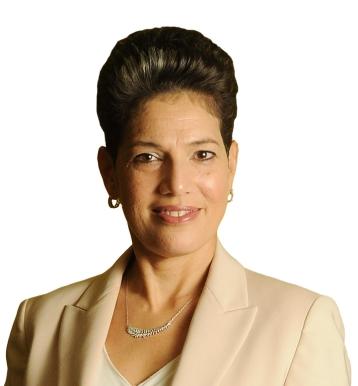
Madeline Velez, a bilingual school counselor at PS 58 in the Bronx, says school counselors are needed “now more than ever to help students succeed.”
What are some of the challenges you and your students are grappling with this year because of the pandemic?
I feel like I’m figuring out how to navigate in a time of universal crisis when I myself feel unstable in the world. I’m seeing both extremes: children who are more hypervigilant about the pandemic and then those who are completely aloof. I have one student who I see in a group for mandated counseling, and I noticed she had some anxiety about mask-wearing — there was a peer in the group whose mask slipped down, and she said, “You have to keep your mask on!” When I talked to her about it in private, it turned out she had a grandparent who had died of COVID, and her mother had told her, “You have to wear your mask to school because Grandma died because she didn’t want to wear a mask.”
What kind of strategies do you use to help students with that kind of anxiety?
This summer, I felt like I was going to need more tools in my belt so I took an intensive course for six weeks to become a social-emotional learning facilitator. I’m incorporating a lot of mindfulness, visualization and breathing exercises. This particular anxious student really responds to those things — she loves this spiral ball where you pull it in as you’re breathing in. So she’s taught herself to do breathing exercises that help her. For one student who was experiencing a lot of anger, I used puppets to do a lot of role-playing — validating his feelings but expressing them through play in a safe environment. So I give students these tools, remind them of the tools and practice the tools so they can be empowered to do it themselves.
How do you approach counseling with young children who struggle to express themselves verbally in sessions?
Especially with younger children, talk therapy can be difficult. I make my counseling sessions as creative as possible to engage children and get them to talk about their feelings. I always say there are unpleasant and pleasant emotions, but there’s no such thing as “good” or “bad” feelings, because children need to learn not to judge themselves for how they’re feeling. I use art therapy and “mindful coloring.” For example, I have a shy student who has a chronic illness that causes digestive issues. She had temper tantrums because she had difficulty saying, “When I eat this, I have a stomachache and it makes me feel sad.” I have a coloring page with a figure of a body, and I have her express herself by selecting a color that goes with a particular emotion and coloring this part of her body. We talked about, “What’s the color of happiness? Where do you feel happiness?” She used pink to color where she felt happiness — on her hands and feet, because she likes to dance. She colored her abdomen with gray and black, sadness and fear. In that way she’s becoming aware of where her emotions manifest. Now that she’s able to describe the feeling in her stomach to me, we can talk about strategies like self-soothing techniques so I can empower her when she’s feeling sadness and fear in her stomach.
How do you see the role of a counselor in an elementary school?
A teacher’s job is to ensure students’ academic success, and we’re there to support and collaborate with them on children’s personal and social development. I work with all the members of the school community — I’m working with the parent coordinator and our Substance Abuse Prevention and Intervention Specialist (SAPIS) worker on a special group for 4th- and 5th-grade girls, and I work with the parent coordinator to hold workshops for parents. We’re modeling behaviors that teach students how to be good citizens and get along with others.
— As told to reporter Rachel Nobel